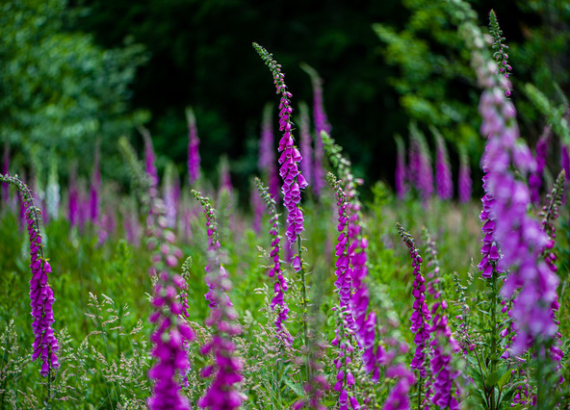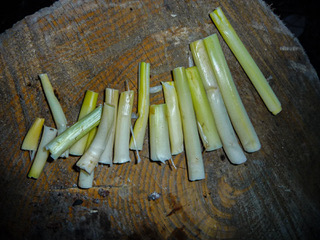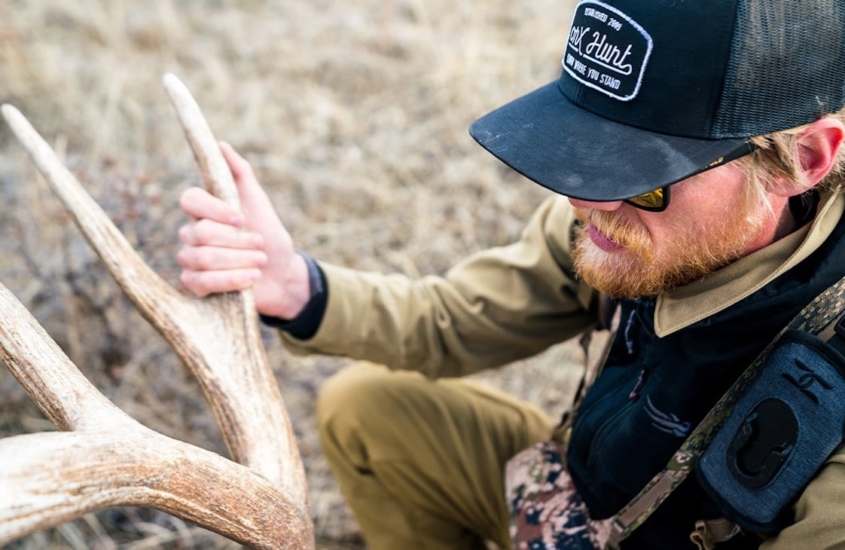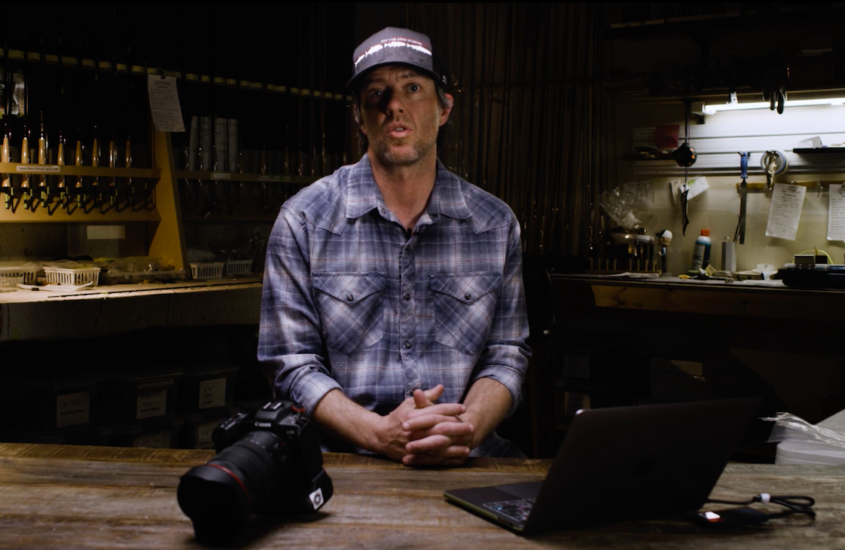By Tom Brown III:
Purchase Tom’s Survival Masterclass here.
As an instructor of primitive living skills, I am often asked what, in my opinion, is the most valuable skill set to learn. Shelter building? Fire making? Water collection? Hunting and gathering? Knowing the basics of all of those subjects is incredibly important. You can’t survive without providing these basic needs.
In many cases, you will die in as little as three hours without shelter and three days without water, so obviously those are important. Fire making is also a necessary skill because we use fire not only to warm us but to purify water to keep us from getting sick.
Lastly, we come to food. I remember as a young child accompanying my father on a tracking case for a missing hiker somewhere in upstate New York. Thankfully, he had been found by a helicopter just before our arrival. Although we didn’t get to track that day, we did get to interview the hiker. My father was always fascinated by these interviews because it offered him insight into people’s minds when they were in survival situations. This allowed him to better educate people on what to do if and when they ever found themselves lost in the wilderness. One of the things that still stands out to me about that conversation was after some preliminary questions; my father asked the missing hiker, “When you realized that you were truly lost, what was the first thing you thought about”? The guy blurted out, “FOOD!”
When most people get lost in the woods, the first thing they think about is food. The average healthy adult can go for three weeks without food before being severely impacted. Lack of shelter and water will kill you far quicker than a lack of food. The first 72 hours of a survival situation are the most critical. If you do not have some shelter, a fire going and a water source within that time, food is the least of your worries. Once those needs are taken care of, you can start thinking about food.
Last year I read a headline from a local newspaper. A man got his truck stuck in the snow and was missing for five days before being rescued. The headline in the paper said, “Missing man survives for five days by eating taco sauce packets.” I had a hearty chuckle when I read that. Further in the article it said to get water he melted snow. That is what kept him alive. Therefore foraging for food is a hugely important subject. Hunting and gathering is something that our ancestors perfected over millennia before the advent of agriculture.
Technically, the term “foraging” means the gathering of resources. These include plants, animals, rocks and water. Hunting is technically considered foraging, but in this article, I am mostly going to be talking about gathering plants for food. If we find ourselves in any situation where we do not have ready access to food, either because we are lost in the woods or a natural disaster has occurred, you need to switch on what I call the “survival mind.” The concept of survival mind is simple. Based on your knowledge and experience with wilderness survival skills, you learn to scan your surroundings and identify potential resources and signs of animal activity.
Here’s an example: when I walk through the woods, I become hyper-aware. I am scanning for and identifying anything I consider to be a valuable resource. I am always on the lookout for potential shelter locations, water sources and the raw materials needed to make tools. Anything I see that I can use, be it a branch I can turn into a fire-making kit, an animal bone that can be crafted into a knife or plants that I can make into rope. I will also be looking for anything I can safely eat. It is crucial to read the landscape itself and make mental notes of possible hunting and trapping areas. The only way to truly cultivate the survival mind is through study, research and practice. I utilize it any time I am in the woods. It’s all about taking in and processing large amounts of information.
As I stated earlier, I am not going to go in-depth on the subject of hunting. However, I want to mention that anytime you are out foraging while in a survival/primitive living situation, you should always carry a hunting weapon. The most easily constructed hunting weapon is a throwing stick, also known as a “rabbit stick.” Throwing sticks are probably one of the first hunting tools our early ancestors used. It is a universal tool, meaning that every hunter-gatherer culture across the globe used them. Everyone from Australia’s aboriginals to the many different indigenous peoples of the Americas had a variation of the throwing stick. They even found throwing sticks in King Tut’s tomb! I plan on exploring the art of the throwing stick in a future article. There will also be a segment dedicated to the throwing stick included in the masterclass I will be producing on how to survive the first 72-hours of a survival situation. While you’re out searching the landscape for resources, you never know when the opportunity to harvest an animal will arise. Never leave your camp without one! The moment you realize you are in a survival situation, you should pick up a throwing stick, or a rock to use as a hunting tool.
In both rural and natural areas, there are several places we can reliably forage for food. Ideally, you want to seek out areas that have the most biodiversity. These areas, also known as transition zones, harbor the most plant and animal life. It’s an area where there is a transition between a forest and a meadow. Another example typical in the Western states of the U.S. is an area that was burned in a wildfire a few years earlier or space that was clear-cut many years prior. These areas provide animals (yourself included) with many food sources, and the cover animals need to feel safe. Most animals, especially small game, will avoid the wide-open forest as they do not feel safe there. It makes sense that if animals seek the transition zone because of more viable food sources, you should too!
Before I start talking about plant sources for food, I want to talk about foraging in and around bodies of water. Lakes, ponds, streams and rivers are replete with many different food sources. In and around these bodies of water we can gather fish, frogs, turtles, crawfish, snails and mollusks, to name a few. Hunting and foraging the waters of our planet requires some specialized skills to do effectively, but even with a basic understanding, bodies of water can yield their bounty. I will be writing an article soon about foraging in and around bodies of water.
In most places, there are hundreds of different species of plants and trees. When it comes to the edibility of plants and trees, only a small fraction are deadly. A slightly larger portion may have some toxic compounds, but not kill you. There is a higher number still that aren’t toxic at all, but our body is not capable of breaking down the food, and it may cause us some discomfort, or make you throw up. Herbivores have specialized digestive systems and gut biomes made to process these types of plants, and we do not. My goal in this article is to teach you some plant families that can yield food sources to us in every season of the year.
I want to take a moment to talk about safety and wild edible food sources. We gather plants to eat to provide us with the energy we need to keep our body and brain functioning. If we eat the wrong plants, we cannot only get sick, but we also run the risk of dying. PLEASE do your research before you eat ANY plants. I recommend that you positively identify a plant with at least three sources before consuming them. There are plenty of stories out there of people getting sick from eating a plant or mushroom that someone once told them was edible. Today we also have access to a host of phone apps that are supposed to identify plants. I read a news story a few months back about a mother and child who got very sick because they ate mushrooms that some app on their smartphone said was edible. I have seen books out there that have poisonous plants labeled as edible as well.
A good starting point is the “Peterson Field Guide to Wild Edible Plants.” I have found it to be a great resource when identifying plants. Another helpful safety-minded piece of advice I will give you is always to assume that every edible plant has a poisonous look-alike. At the end of this article, I will provide a list of books I highly recommend and know to be safe and reliable.
Once we have positively identified a plant as edible, it’s a good idea to eat it sparingly at first. Everyone’s body is different. A plant that may be fine for one hundred people to eat may contain a compound that doesn’t agree with you. Eat a small amount and wait 30 minutes to 1 hour to see how you feel. Lastly, be mindful of where you forage. Plants readily absorb toxins from the Earth. It’s not wise to gather plants near highways or industrial sites. I would also advise thoroughly washing any plants you gather before eating. I have seen people eat plants off of the sides of trails where people regularly walk their dogs. Dogs like to pee on things. Enough said!
One more side note on edible plants in general. It’s called “the three rights.” The three rights are “right part, right season, right preparation.” For certain plants, only one part is edible. Cherry is one that comes to mind. Cherries are very delicious and edible, but the pits and leaves of the tree contain a form of cyanide. As far as the right season goes, fern fiddleheads are edible in the spring while they are young but rapidly become toxic as they grow. When it comes to the right preparation, plants like milkweed and pokeberry are toxic, even when they are young, but if you prepare and cook them properly, it removes the toxicity.
From a medicinal standpoint, there are plants in their natural form that are highly toxic, yet when processed in a lab, they can yield essential medicines. Here in the Pacific Northwest, and many other places, there is a plant called foxglove (see photo). This beautiful flowering plant is deadly. Yet, pharmaceutical companies identified a compound with the plant called Digoxin, which is used in medications to regulate heart rhythm.

Now I would like to introduce you to what I call “the big four.” These are four families of plants and trees found worldwide, east to west and north to south. The best part about the big 4 is that they can provide a food source no matter the season.
Pines
All species of pines are edible. But keep in mind that not all evergreens are pine. Pines typically have two to five needles per bunch with a paper sheath at the base. A year-round food source on pines is the cambium layer. Cambium is the spongy layer between the outer bark and the actual wood of the tree. Pine cambium can be peeled out and eaten raw. It can be cut in strips and cooked like noodles, or be dried and eaten like jerky. It may not taste the best, but it is full of sugars, vitamins and other nutrients. Be careful not to remove too much from a single tree. Since it is the tree’s living layer, taking too much can allow disease in or kill the tree.
Another year-round source is the needles. They can be gathered, chopped up and made into a tea full of vitamins A and C. In fact, pine needles have four to five times the vitamin content of fresh squeezed orange juice.
In the spring, we can collect the fresh buds growing on the tree and eat them raw. Unlike cambium, the buds are quite delicious. We can also collect pine pollen in the spring to add to flour or sprinkle on tops of other foods. The pollen is full of protein!
Next up are the cones. When the new pine cones are young and green, they can be harvested and cooked like a potato. When the cones of certain pines mature, they can yield tasty seeds, also known as pine nuts. All species of pines will produce seeds or nuts, but many are very small, and not worth the effort to get at them. There are about 20 species of pines in the world that have seeds big enough to warrant the effort of gathering them.
Oaks
Oaks are up next. While they only have one food source, the acorn, it holds a spot in the big four because it is a common family of trees that grow worldwide. It was a hugely important food source for people across the globe in the past. In certain parts of Europe, taking acorns from “the king’s land” was punishable by death! Taking a raw acorn and turning it into a food source is a bit of work, but well worth the effort. The process is simple, but would take more time to explain fully than I have room for in this article. A quick web search will give you many resources and I recommend this article that Hank Shaw wrote on the subject.
In short, you collect the acorns in the fall. You want to collect the undamaged ones that aren’t crushed or have wormholes in them. Another concern is mold if you are harvesting acorns in wet environments. Once you have a good supply, you can take the cap off, and dry them out. Once they are dry, you can store them as-is until you are ready for the next step or crack the tough outer shell open and get at the seed inside. You then have to leech the bitter tannic acid out by soaking them in water. Depending on the species, some oaks require several changes of water to get the bitterness out. This process will turn the water a tan/brown color. Every time you change the water, it will get lighter in color.
A quick side note, you can save the liquid which can be used as an astringent. It has anti-microbial properties and can be used on scrapes and as a mouthwash to treat sore throats and gum infections. The other use of the tannic water is as a solution for tanning hides.
After you leech the acorns you must dry them out again, and then roast them. After roasting, you can eat them as is. The flavor is reminiscent of chestnuts, or you can grind them up to make acorn flour. You can make breads, ash cakes and just about anything you can use regular flour for. It can be stored for a very long time if it’s kept cool and dry. Ideally, you want to store your acorn flour in the refrigerator as it has a reasonably high fat content and it can spoil. The wood of oak trees and saplings also has many utilitarian uses— baskets, bowls and tool handles, to name a few.
Grasses
There are 14,000 species of grasses. All but four are edible. Grasses make up 10 of the 15 major food crops produced (corn, wheat, barley, rye, etc.). Grasses cover one-third of the Earth’s landmass. In a pinch, grass leaves can be chewed, the nutrients and juices swallowed and the plant material spit out. You can dig up the rhizomes (roots) peel off the outer layer and eat them raw or cook them.
Grass seeds are the primary source we are after, and because there are so many species, they tend to go to seed at different times of the year, from early spring to winter. Gathering grass seeds, then separating the “wheat from the chaff” can be time-consuming. The grains can be cooked into a gruel and eaten or dried and ground into flours. Grasses can also be used as an excellent shelter covering, and certain large grasses can be bound together and made into boats!
Cattails
Cattails are in the grass family and grow around ponds, lakes and marshes. Like the pines, it will provide us a food source every season of the year. It has been lovingly called “the supermarket of the swamp.” In the spring and early summer we can harvest the green shoots and peel away the outer layers to expose the tender, white fleshy part. They are delicious and have the taste and texture of cucumber. They can be eaten raw, cooked or steamed.

When the flower head starts to form we can harvest them, then peel away the green papery sheath and steam or boil for 10 to 15 minutes. Eat them like corn on the cob! Once the flower head matures, it will start to produce pollen that we can harvest by placing a bag over the flower head and gently shaking it. Repeat this process until you have a decent amount of pollen. The pollen can be added to other flours such as acorn or grass seed, which will enhance the flavor and add nutritional value to them.
In the fall, winter and early spring, we can dig up the rhizome, cut it in half, and dry it. We can then grind it up, sift any plant material out and make a starchy flour that will be 30 percent starch and 8 percent protein. While digging the rhizomes, we can also search for the corm, which is a little potato-like starch pocket. You can cook the corm as you would a potato!
Cattails have many other uses as well. You can make baskets, cordage, sleeping mats and even rafts! One safety concern when it comes to cattails—they are amazing at filtering toxins out of water and soil so you want to make sure you gather them from bodies of water that are unpolluted.
As far as other common plants go that are relatively universal, I recommend researching the ones I am about to mention. Many are plants the average person would consider to be weeds, yet are highly delicious and nutritious!
A few common plants to find and identify near you are dandelions, plantain, chickweed, stinging nettle, dead nettle, sheep sorrel, violets, miners lettuce and purslane, to name but a few! Learning these common edibles and their relatives is a great starting point in adding wild edibles to your diet. They are easy to collect and require little in the way of preparation before eating.
I hope that I have piqued your interest in starting to explore the wonderful world of wild-edibles! It is a life-long journey, and there is always more to learn! You should also take advantage of social media, and search for groups in your specific area dedicated to foraging. There are many groups worldwide that can be found on Facebook and Meetup. Linking up and learning with people that live near you will help you better understand what wild-edibles are growing where you live!
Recommended reading:
“Peterson Field Guide to Wild Edible Plants”
“Peterson Field Guide to Medicinal Plants”
“Botany in a Day” by Thomas J. Elpel
“Plants of the Pacific Northwest Coast” by Jim Polar and Andy MacKinnon
If you want to learn more from Tom on wilderness survival, foraging, or any other topics he writes about for Anchored Outdoors, he teaches weekly webinars through Trackers Earth. You can register at https://spark.trackersearth.com/trackers-skills/













